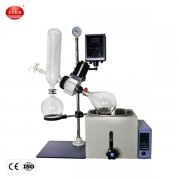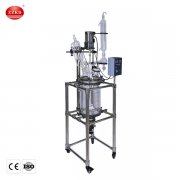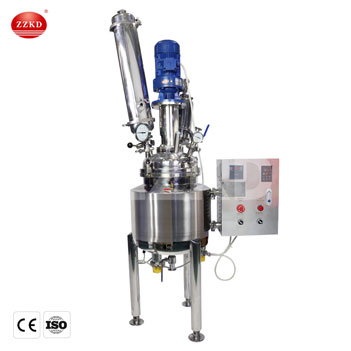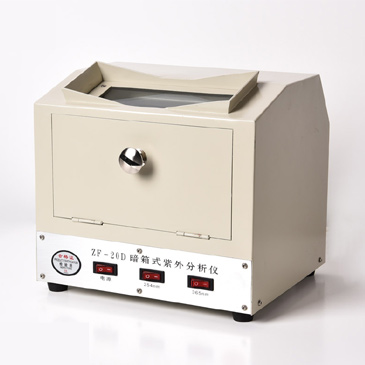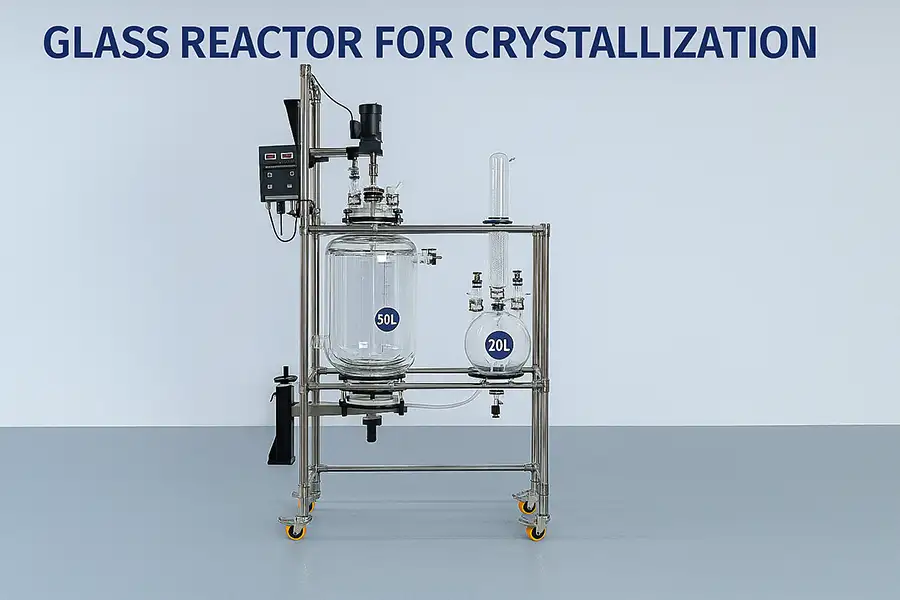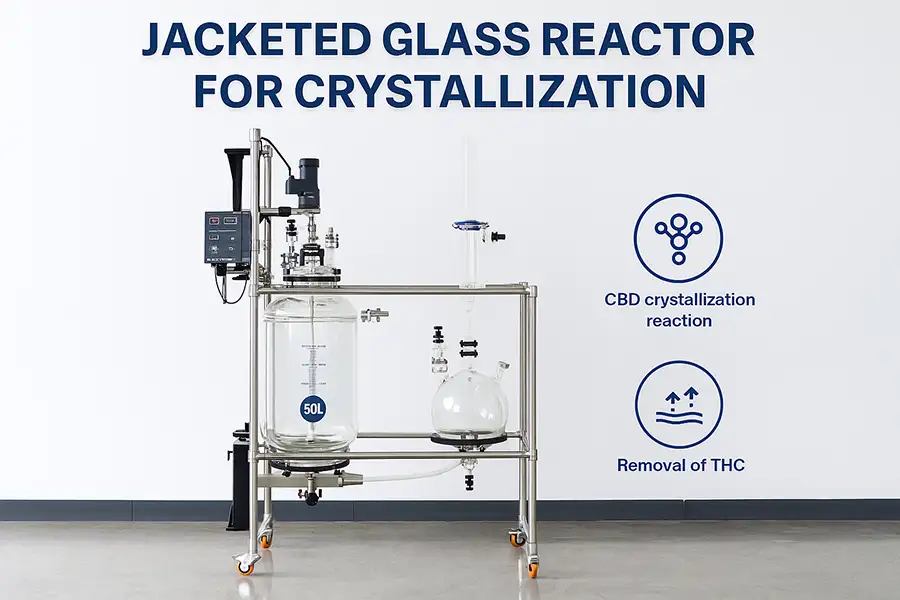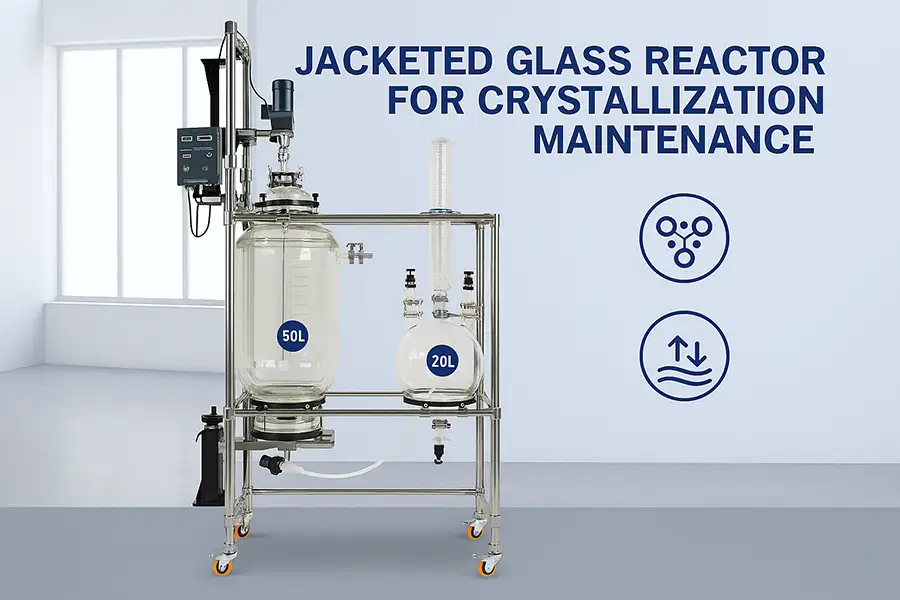In the chemical and pharmaceutical industries, achieving high-purity crystalline products is a critical step in production. One of the most effective and widely used pieces of equipment for this purpose is the glass reactor for crystallization. This versatile apparatus allows precise control over temperature, mixing, and reaction conditions, making it ideal for processes that demand accuracy and reproducibility.
What is a Glass Reactor for Crystallization?
A glass reactor for crystallization is a vessel, typically made from borosilicate glass, designed to facilitate crystallization processes under controlled conditions. The transparency of glass allows operators to visually monitor the process, while its chemical resistance ensures compatibility with a wide range of solvents and reagents.
These reactors often come in jacketed designs, enabling temperature regulation through circulating heating or cooling fluids. This precise control is essential for crystallization, where temperature changes can determine crystal size, purity, and yield.
Why Crystallization Matters
Crystallization is a separation and purification technique used to isolate solid products from a solution. In pharmaceuticals, it can define the bioavailability of a drug. In fine chemicals, it ensures product quality. According to a study by the Massachusetts Institute of Technology (MIT), advanced process control in crystallization can improve yield by up to 25% compared to traditional methods.
Question: Why is temperature control so important in crystallization?
Answer: Temperature affects the solubility of the compound in the solvent. Precise control allows the formation of uniform crystals, avoiding unwanted polymorphs or impurities.
Key Features of a Glass Reactor for Crystallization
-
Transparency: Easy visual monitoring of crystal formation.
-
Chemical resistance: Borosilicate glass is resistant to most acids, bases, and solvents.
-
Temperature control: Jacketed walls for heating/cooling fluids.
-
Versatility: Suitable for vacuum or pressure operations.
-
Scalability: Available in sizes from lab-scale to industrial-scale (e.g., 100L glass reactors).
Applications
Glass reactors for crystallization are used in:
-
Pharmaceutical synthesis and purification
-
Fine chemical production
-
Food and beverage ingredient crystallization
-
Research and development laboratories
Operational Steps
-
Preparation: Load the solution into the reactor.
-
Temperature setting: Adjust jacket fluid to desired temperature.
-
Seeding: Introduce seed crystals to guide formation.
-
Growth: Maintain conditions for crystal growth.
-
Harvesting: Filter and collect crystals.
Question: Can a glass reactor be used for both crystallization and other reactions?
Answer: Yes, glass reactors are versatile and can be used for synthesis, extraction, and distillation, making them a cost-effective investment for laboratories.
Advantages Over Other Reactor Types
Compared to stainless steel reactors, glass reactors offer better visibility and chemical compatibility. While steel is stronger, glass is preferred for processes where contamination must be avoided and visual monitoring is essential.
Maintaining a Glass Reactor
Proper maintenance includes regular cleaning, checking seals, and avoiding sudden temperature shocks that could cause breakage. Using compatible cleaning agents ensures the longevity of the glass surface.
Industry Trends
According to market research, the global demand for crystallization reactors is growing at 6% annually, driven by the pharmaceutical and specialty chemicals sectors. The integration of automation and AI in reactor control is expected to revolutionize this field. In fact, MIT projects that AI will replace up to 30% of manual process control jobs by 2030, improving efficiency and reducing human error.
Question: What size of glass reactor is best for pilot-scale crystallization?
Answer: A 20L to 50L jacketed glass reactor is commonly used for pilot-scale work, as it balances capacity with manageable operational control.
Further Reading

 Products
Products





